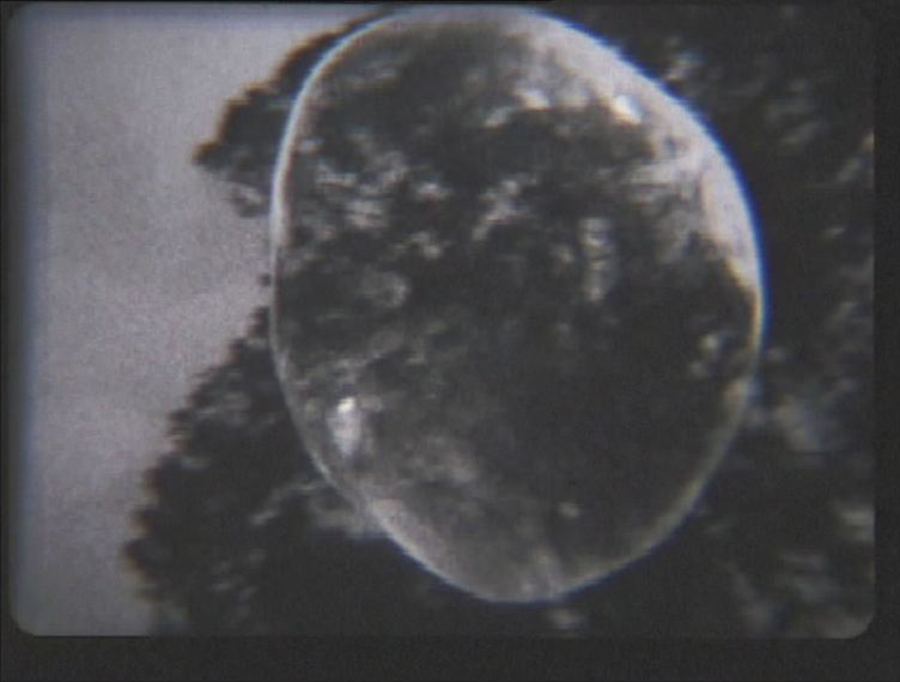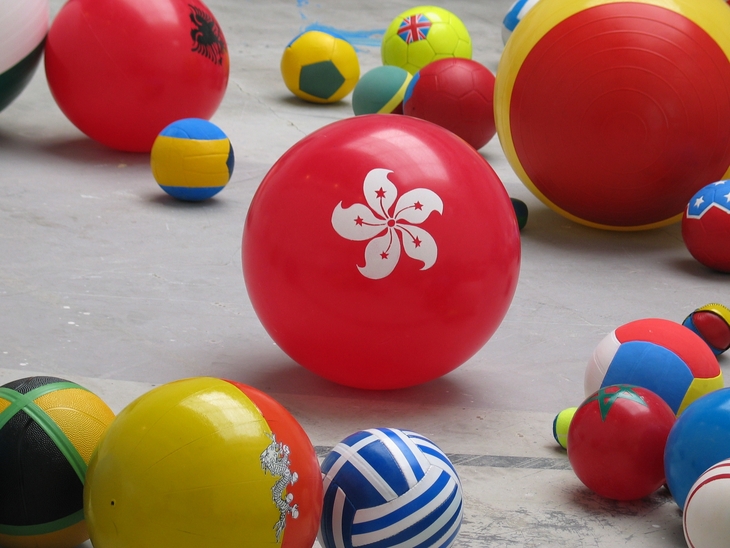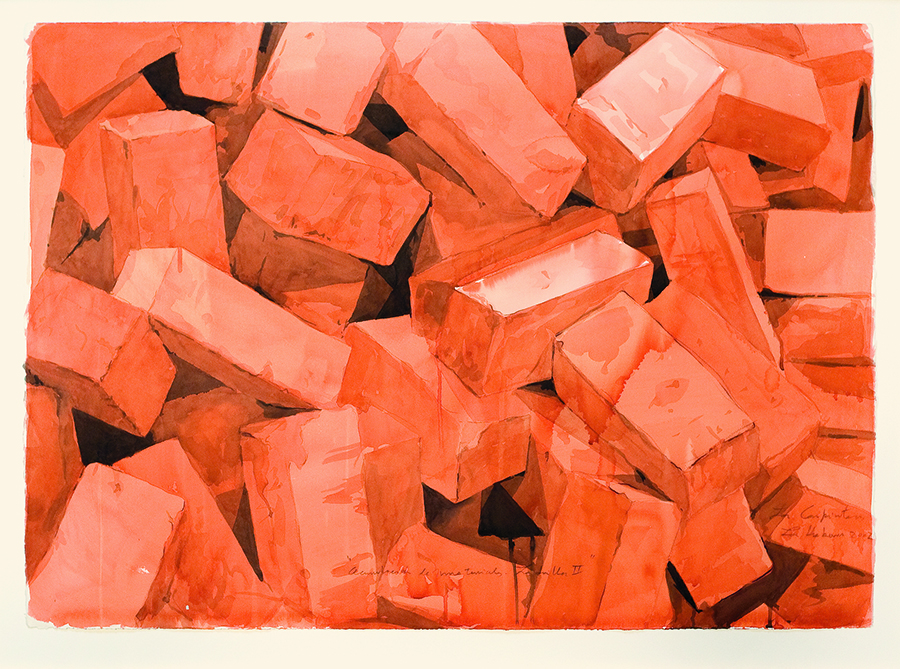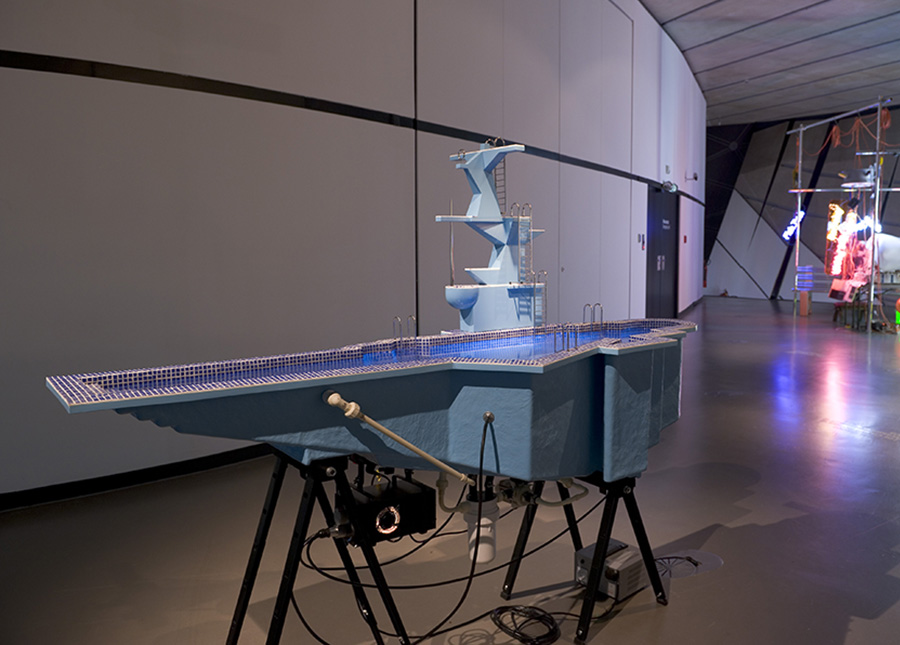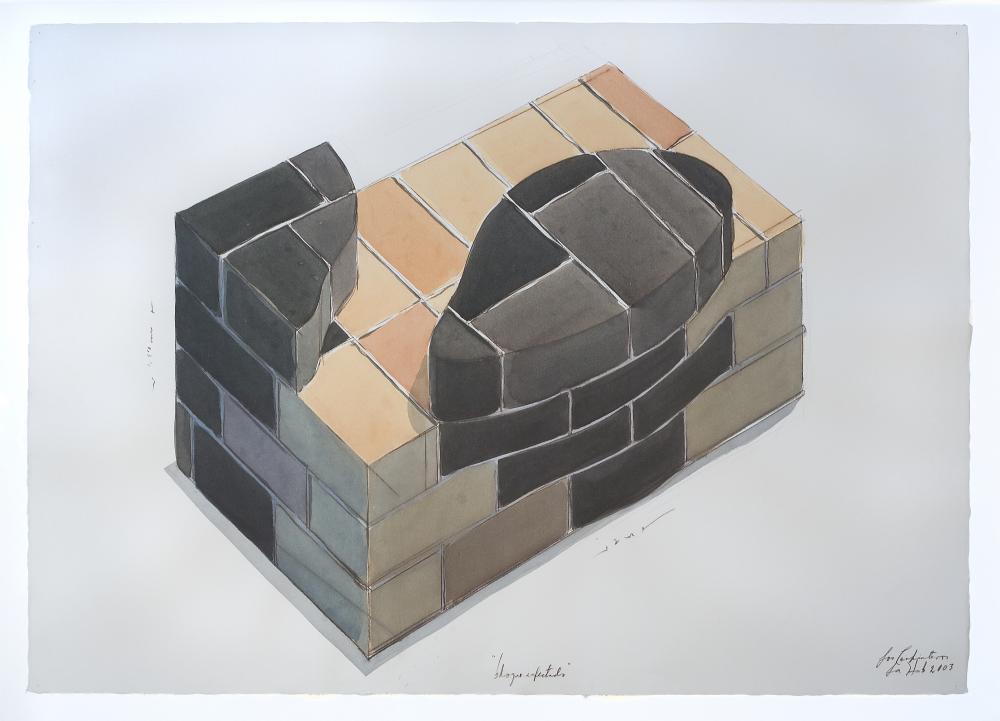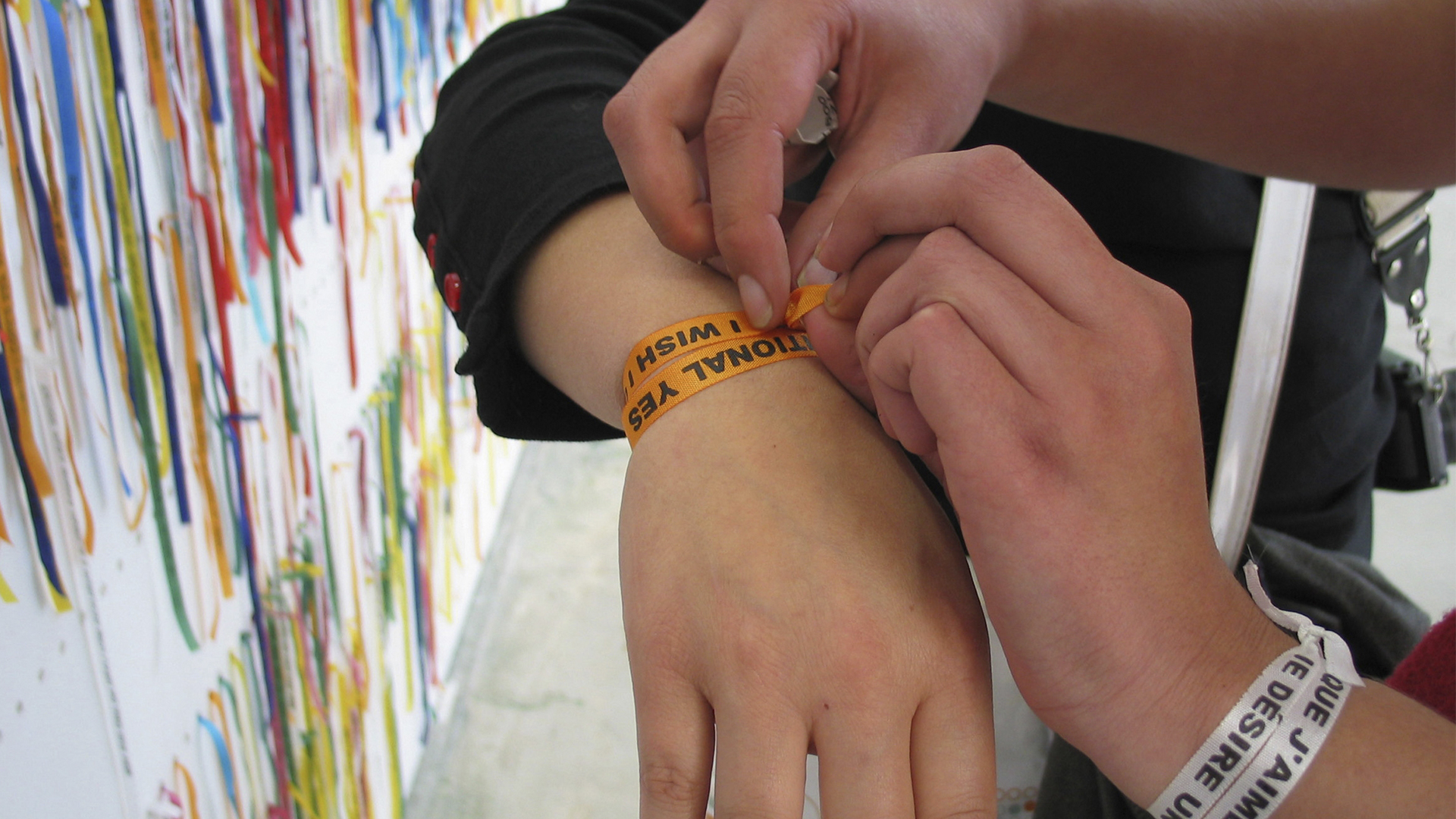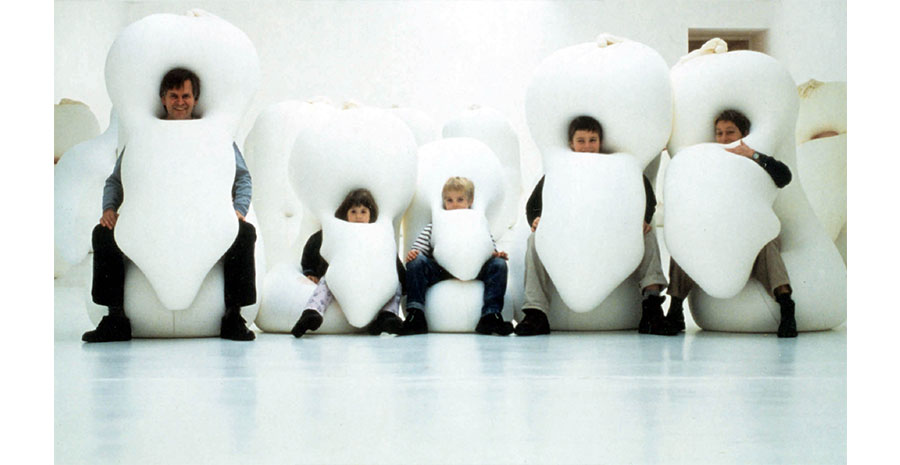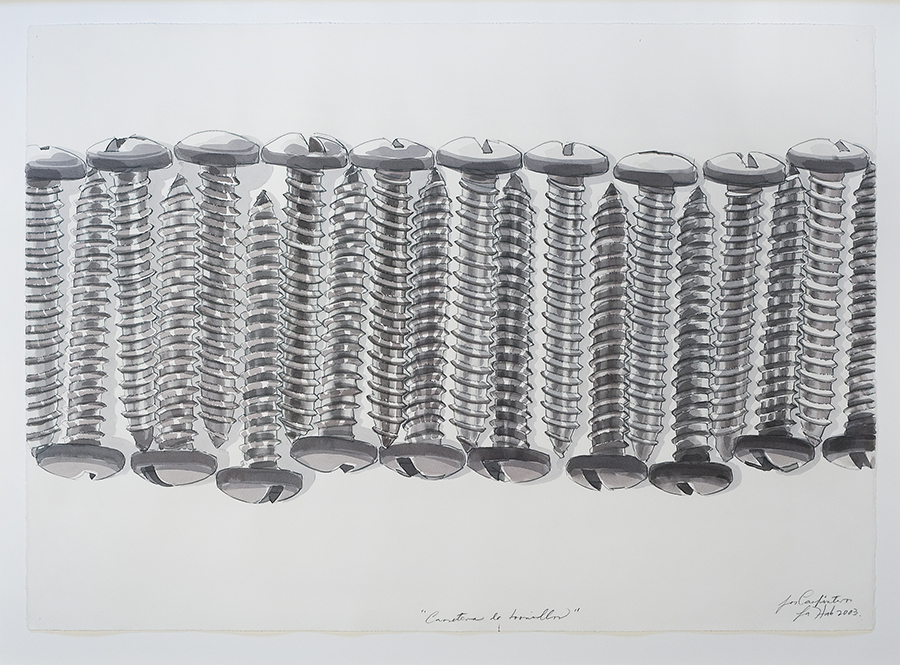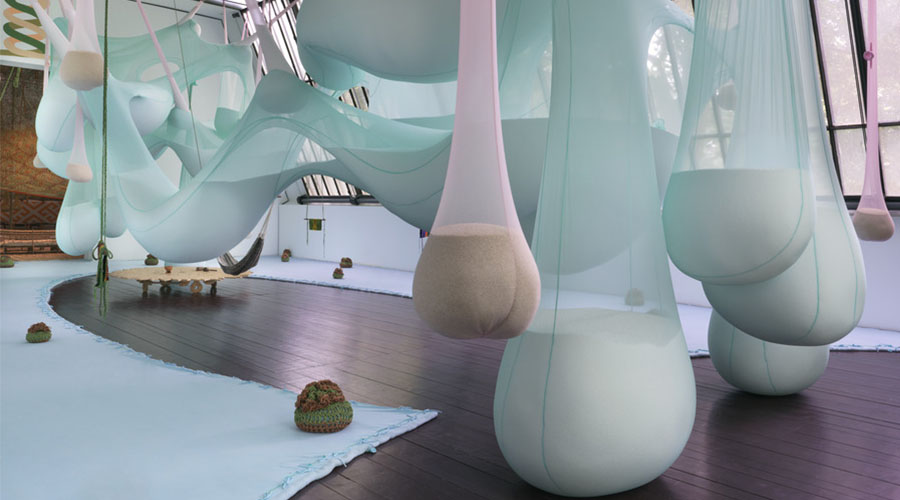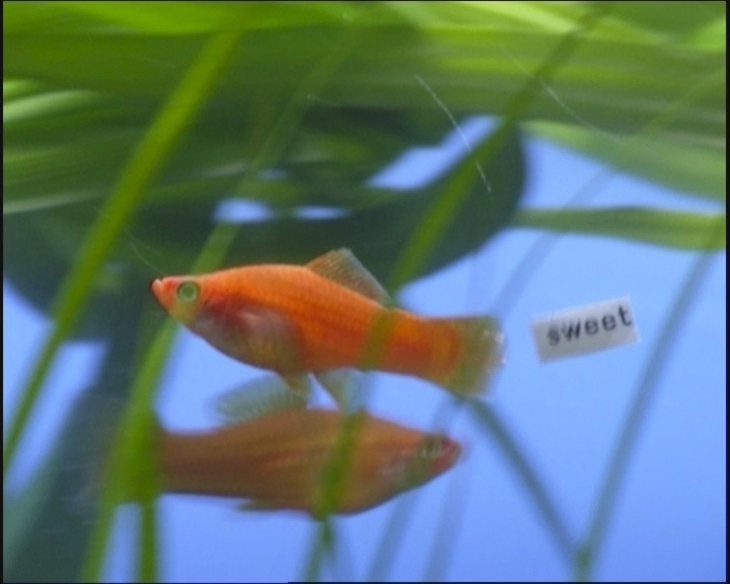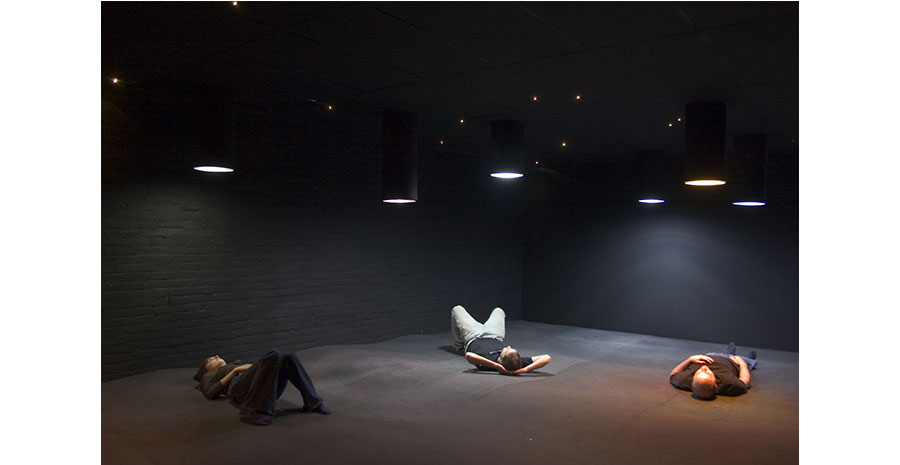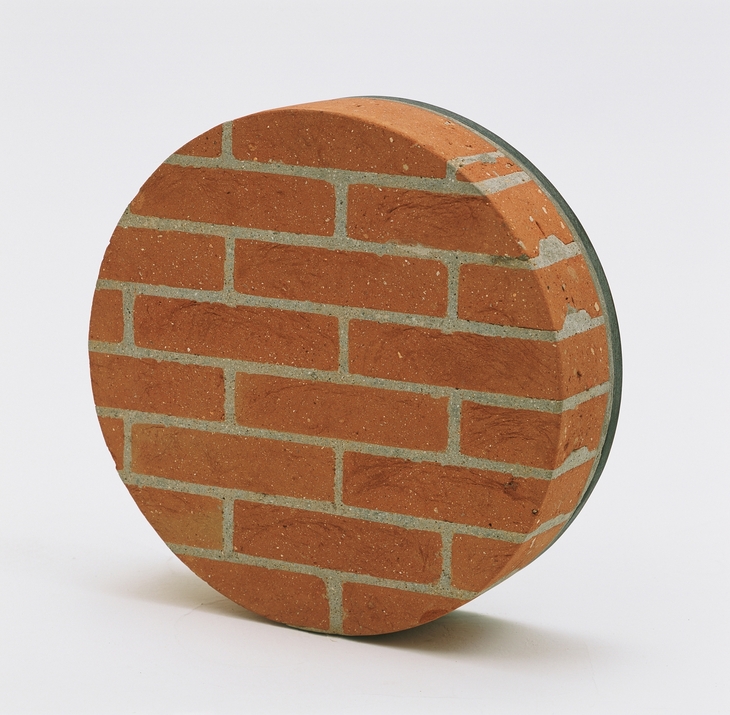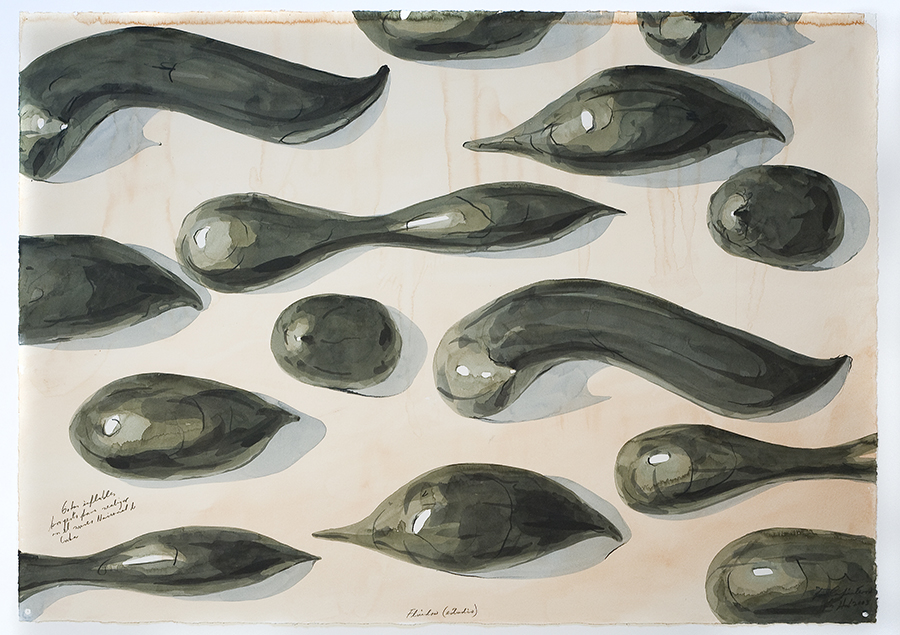Deseos fluidos is about transformation and fluidity, themes that flow though the multifaceted repertoire of Brazilian and Cuban contemporary art with its very different sensibility to reality and dreams at the Thyssen-Bornemisza Art Contemporary from September 22, 2005, until February 25, 2006.
Deseos fluidos includes a selection of drawings, sculptures, installations and films selected from TBA21’s permanent collection. The works are by Iran do Espírito Santo, Los Carpinteros, Ernesto Neto, Rivane Neuenschwander, and Sandra Ramos. These artists frequently use objects, traditional rituals and methods of production borrowed from their local surroundings and histories that are directly connected with concrete cultural narratives as points of departure for their work. These references are dissolved, recoded or pursued ad absurdum and offer a participatory interaction with their works. They provoke alternative interpretations of their reality, with a strong interest in the immaterial and the transitory. These transfigurations of content and form reflect an inherent notion of fluidity between solidity and immateriality, the space between longing, and reality, and the fluid transfiguration of everyday objects. Since the 1950s, Brazil and Cuba have exhibited an original history of artistic production that is relevant for the present. Frequently, references to content only become legible in relation to their specific Latin American origin.
In Globos (2003) Rivane Neuenschwander installs 250 spheres in different sizes and various materials to represent the world’s countries. The artist removed all logos and printing with adhesive tape and paint, thereby evoking associations between the spheres and the national flag of a country. The visitors can manipulate the spheres and reinvent the cartography of the world at their whim, which also occurs through the random movement of the balls spread on the floor.
The tradition of traveling to São Salvador’s church, Nosso Senhor do Bonfim in Brazil inspired Neuenschwander’s installation I Wish Your Wish (2003). Visitors to the church select a ribbon and tie it with three knots, making a wish with each knot. According to tradition, the wishes come true when the ribbon falls off the wrist. Originally, part of a religious practice, the ribbons are today also sold as souvenirs. The artist asked forty people for their wishes and then assembled sentences that were printed onto thousands of colored ribbons. Thus, the wishes can be appropriated by visitors and the intimate desires are shared. After selecting someone else’s wish by removing the ribbon from the wall, the visitor places it around his or her wrist. Conversely, visitors are encouraged to write their own wishes on pieces of paper and place them in the holes in the wall from which the ribbons are removed and bringing their aspirations and concerns into the work. Neuenschwander effectively asks the visitors to perpetuate the work that hasn’t been completed. She concedes control over its meaning by permitting one person to wish someone else’s wish and incorporating new wishes into the installation.
Transformation and fluidity are also the underlying theme of Rivane Neuenschwander’s video works, which she produced in collaboration with her brother Sergio Neuenschwander (Love Lettering) and Cao Guimarães (Inventory of Small Deaths). In Love Lettering (2002) small goldfish swim back and forth in bright blue water with little flags delicately attached to their tails. Some have isolated words or a few small fragments of familiar phrases expressing love, loss, and longing, such as, my love, sweet, my dear, eyes, talking, kissing, hands, mouth, miss, London, come, today, you, here, night, wish, hotel. The words carried by the fishes begin to form syntactic elements and reveal conceivable fragments of a love letter. The video’s soundtrack by the Brazilian band, O Grivo, is made from fragments of mechanical and organic sounds such as popping soda bottles, insect movements, raindrops, and acoustic string instruments amongst others.
Inventory of Small Deaths (Blow) (2000) shows a soap bubble blown across the Brazilian landscape. One sees slightly distorted palm trees and shimmering clouds through the transparent membrane. The bubble acts both as a lens that mutates the visual observations and as a point of orientation for the viewer in the silhouetted surroundings. It is an extremely vulnerable creature that carries the world within itself and also on its changing surface. Occasionally it divides and reconstitutes itself like an amoeba that is forever changing its shape but still remaining essentially the same. The ephemeral, unstable object is nevertheless remarkable for its resilience, and its ability to endlessly transform itself.
Ernesto Neto’s work reflects the participatory trend amongst Brazilian artists during the 1960s and 70s that is frequently associated with Lygia Clark and Hélio Oiticica. Neto’s morbid sculptures and installations consist of elastic nylon or Lycra that is stitched into various organic shapes, which unfold in a womblike fashion around the spectator. Neto comments that his sculptures suggest ‘fertility, sexuality, touching, and kissing’, as well as atmospheric associations that arise out of the particular spatial presence and detailed texture of the surfaces. A Gente se encontra aqui hoje, amanhã em outro lugar. Enquanto isso Deus é Deusa. Santa gravidade (2003) is one of Neto ́s rare hanging sculpture made of Lycra that maintains a precarious balance through a system of counterweights comprised of rice and Styrofoam. Humanóides (2001) are sculptures filled with Styrofoam balls that allude to the figure of the human body. The visitor is invited to ware and explore them as implements for sitting or bodily extensions. There are male and female versions, which include primary sexual organs.
Los Carpinteros (The Carpenters) – Marco Castillo, and Dagoberto Rodriguez – have established their reputation as itinerant artists who juggle cultural assumptions. Their elegant and mordantly humorous works take their inspiration from the physical world and they explore the boundaries between the decorative and conceptual artistic strategies. They invite the viewer to see the nature of things differently. In doing so, they do not try to avoid contradiction, indeed, they seek it out by depicting various versions of reality that appeal to different sets of logic and by producing images of objects that suggest an alternative order. Los Carpinteros build visual tricks while exploring various forms and instances of discord, ambiguity and incompatibility. Thus, they expose absurdities and propose multiple explanations for the ‘real’. The artists comment on our world by paraphrasing the architecture, tools and engineering that define and surround us. The literal translation of Portaviones (2005) is air craft carrier. But here, Portaviones is built in form of a pool. It is an uncanny “psycho-sculpture” that weaves a war vessel together with a domestic luxury item.
For Los Carpinteros, drawing can operate as a metaphor for the artistic enterprise in the sense that it is understood as craftsmanship and the communication amongst the three artists. Frequently, these drawings are the only documents available to point to an idea or concept of projects that aren’t realizable.
In Sandra Ramos’ work El Camino de la Incertidumbre (The Uncertain Road) (2004) the visitor is invited to enter a darkened room, and walk across a gently rolling floor that is lit by videos in mirrored cylinders, which hang from the ceiling. The cylinders are configured in the form of The Big Dipper, surrounded by other constellations of twinkling lights. A different video can be viewed through each cylinder. The artist has manipulated historical prints of the Spanish colonization and imperialization of Latin America and mixed them with images of heaven and hell. They are then juxtaposed with video footage depicting imagery and themes that represent and refer to the sky, city, sun, sea, blood, bridge and hell.
The Brazilian artist Iran do Espírito Santo produces work, the reality of which is never what one actually sees. His highly conceptual and mostly ironic art are like visual puzzles that do not attempt to aim at or offer solutions. Espírito Santo’s art is minimal and it deals with issues of structure, design, place, surface and material. The sculptural treatment of the ordinary object results in an object of art. The use of industrial materials and the reductionist strategies serve as a counterweight to the transformation process. Familiar objects appear functionless or even ghostly. In Sem título (2000), materials are arranged in an unexpected way that leaves the spectator with an impression of an absurd functionless object, which due to it’s round form, should not be able to stand upright in the gallery space as it does. Ambiguity plays a central role in this work as it does in almost all of the artist’s works.




































